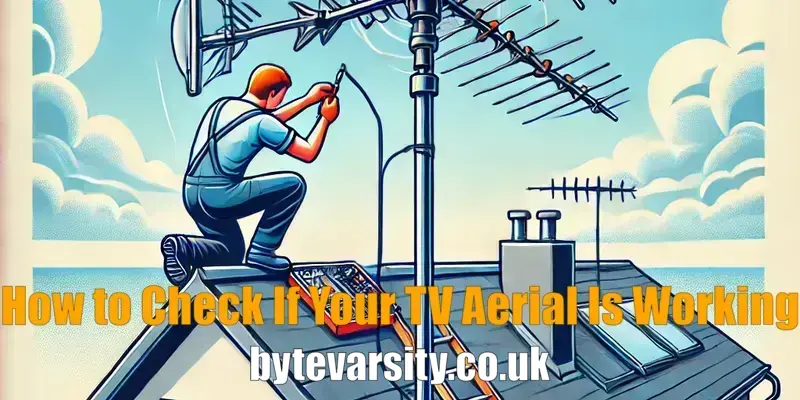Understanding the Basics of TV Aerials
A well-functioning TV aerial is crucial for receiving high-quality over-the-air broadcasts. From catching live news to enjoying your favorite shows, your aerial plays a key role in ensuring consistent signal reception. However, external factors like weather conditions, wear and tear, or improper installation can disrupt performance.
Common signs of aerial issues include:
- Pixelated or frozen screens
- Missing channels
- Frequent “No Signal” messages
By understanding these symptoms, you can troubleshoot the problem early and avoid potential disruptions or expensive repairs.
Visual Inspection of Your TV Aerial
Checking for Physical Damage
Start by visually inspecting your aerial for signs of damage. Look for:
- Bent or broken components
- Rust or corrosion
- Accumulated debris, such as leaves or bird nests
Physical damage or obstructions can significantly impact the aerial’s ability to receive signals. Clearing debris or replacing broken parts can restore its functionality.
Ensuring Proper Alignment
Alignment is crucial for receiving a strong signal. Use a compass or a mobile app to ensure your aerial is directed toward the nearest broadcasting tower. If you’ve recently experienced heavy winds, check if the aerial has shifted from its original position and realign it as necessary.

Testing Signal Strength on Your TV
Using Your TV’s Built-In Signal Meter
Most modern TVs feature a signal strength meter within their settings menu. Navigate to the “Signal” or “Tuning” section to access this feature. A high reading indicates a strong signal, while a low reading suggests that your aerial may require adjustments.
Checking for Weak or No Signal
Switch through different channels to identify if the issue persists across all of them. If none of the channels work, your aerial could be the root cause, requiring further inspection or realignment.
Inspecting Cables and Connections
Examining Coaxial Cables for Damage
The coaxial cable connecting your aerial to the TV is another critical component. Over time, it can develop cracks, frays, or other damage, leading to poor signal quality. Inspect the entire length of the cable and replace it if you notice any visible defects.
Ensuring Tight and Clean Connections
Loose or corroded connections can lead to interruptions in signal transmission. Ensure all connectors are tightly secured to their ports and clean them with a dry cloth or contact cleaner to remove dust or corrosion.
Troubleshooting Common Issues
Addressing Weather-Related Disruptions
Rain, snow, and wind can temporarily weaken signal quality. If severe weather conditions are frequent in your area, consider investing in a more robust outdoor aerial or relocating your current one to a sheltered position.
Resolving Interference Issues
Electronic devices like microwaves, routers, and even construction work can cause interference. Test your reception by turning off nearby devices. If interference persists, you might benefit from installing a signal booster to amplify the reception.
When to Call a Professional
Identifying Problems Beyond DIY Solutions
If your troubleshooting efforts fail to resolve the issue, it may be time to consult a professional. Problems like structural damage, faulty wiring, or advanced alignment errors are best left to experienced technicians.
Finding a Reliable Technician
Choose a certified professional with a strong reputation and positive reviews. A technician can perform a detailed assessment, repair any faults, and suggest upgrades if necessary, ensuring your aerial provides long-term reliability.
By following this step-by-step guide, you can identify and resolve most TV aerial issues, restoring your favorite entertainment without delay. If the problem proves too complex, don’t hesitate to seek professional help for a seamless viewing experience.